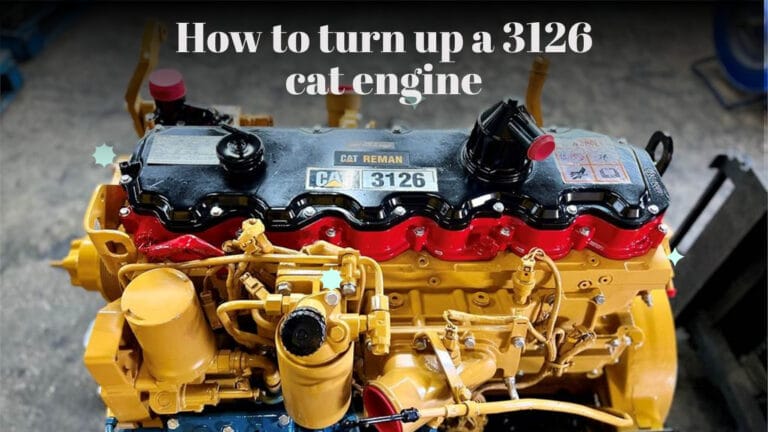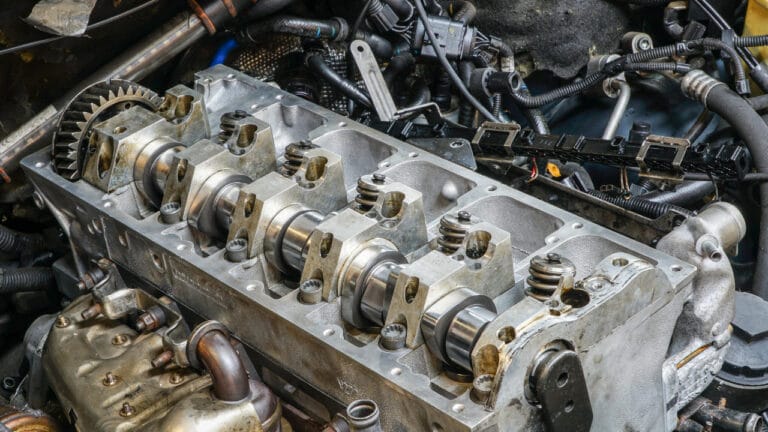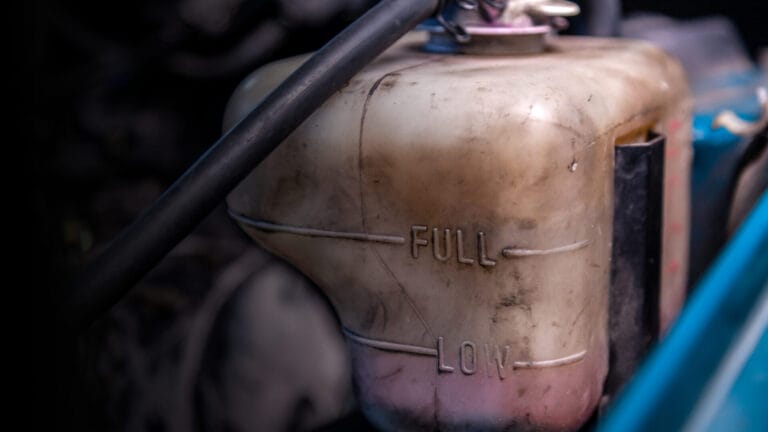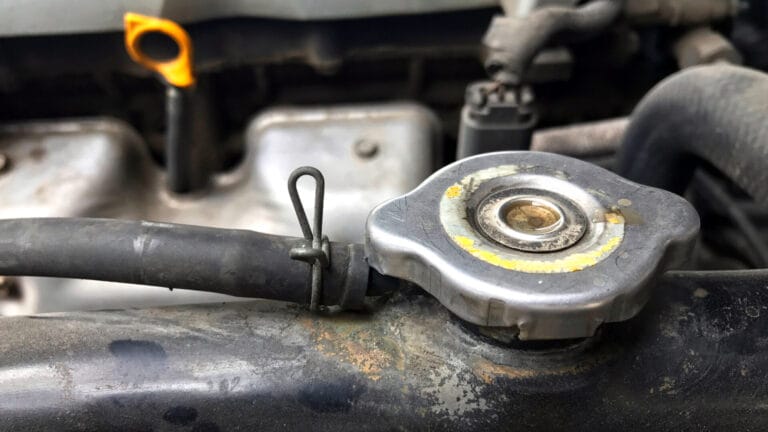Can A Car Overheat Without A Thermostat? Effects, Pros & Cons
A car thermostat regulates the flow of coolant to and from the engine. It is the thermostat that keeps a car running at an optimal temperature.
Can a car overheat without a thermostat? Yes, a car can overheat without a thermostat. The lack of a thermostat prevents the hot coolant from cooling down in the radiator. It flows back to the engine, causing overheating. Also, uneven coolant circulation leads to hot spots in the engine components.
Find out what happens if you keep driving a car without a thermostat.
- Can a Car Overheat Without A Thermostat?
- What Happens If You Drive A Car Without A Thermostat?
- How Long Can A Car Run Without A Thermostat?
- Does A Car Without A Thermostat React Differently In Cold Or Warm Climates?
- What Are The Pros And Cons Of A Car Without A Thermostat?
- Can A Car With A Thermostat Cause Overheating?
- What are the Effects of Driving a Car Without a Thermostat?
- FAQ
- Final Thoughts
Can a Car Overheat Without A Thermostat?
Yes, a car can overheat without a thermostat. Without a thermostat in place, the coolant moves freely between the engine and the radiator.
It overrides the stipulated flow rate of cooling range between 2-14 gallons per minute at 82-83 °C.
The fast-flowing coolant coming from the engine never gets the chance to cool down inside the radiator.
It takes approximately 5-15 minutes for the radiator to absorb heat from coolants.
This hot coolant gushes back to the engine system, aggravates the temperature, and causes overheating, especially at high speeds.
Moreover, in a car without a thermostat, the coolant does not circulate evenly across the engine’s internal components. This develops hot spots in the engine pistons, bearings, or cylinder walls, which leads to overheating.
Refer to the image below to see how a thermostat helps regulate coolant flow to maintain optimum operating temperature.

What Happens If You Drive A Car Without A Thermostat?
The following issues will arise if you drive a car without a thermostat:
Difficulty Maintaining Optimum Operating Temperature
The optimum operating temperature of an engine is between 75°C and 105°C. A car without a thermostat will operate at 50°C or lower, especially at lower speeds.
The constant cooling effect vaporizes and humidifies the engine components. Too much moisture is abrasive and will cause severe damage to the engine parts.
Additionally, moisture contamination can oxidize and lead to the formation of oil sludge. Oil sludge can clog engine components and hinder proper oil circulation.
Alternatively, at high speeds, a lack of a thermostat can lead to overheating, as discussed above.
Fuel Overconsumption
The absence of a thermostat can falsely detect engine temperature to be low due to the high coolant effect. This triggers the ECU to command the fuel injectors to spray more fuel to warm up the engine. This makes the engine run ‘rich’.
As a result, the car consumes an additional 10-20% of fuel. Increased fuel equals increased costs.
The Car Heater Blows Cold Air
Car heaters use hot coolant from the engine to heat up the cabin. When there is no thermostat, the coolant does not remain in the engine long enough to become hot. Consequently, the car heater blows cold air instead of hot air.
Higher Emission Of Pollutants
When the engines run rich, more fuel is used in the air-fuel ratio. This causes the exhaust to release more hydrocarbons and carbon monoxide into the environment. Pollutants cause harm to the environment and other drivers.
How Long Can A Car Run Without A Thermostat?
Typically, your car can run for 1-2 hours without a thermostat, especially in warmer climates. Some people report being able to drive for months on end without any issues.
However, an engine that does not operate at optimum temperatures will be gradually destroyed in the long term.
Does A Car Without A Thermostat React Differently In Cold Or Warm Climates?
Yes, a car without a thermostat reacts differently in cold or warm climates.
In cold climates, a car without a thermostat has a hard time warming up the engine. Due to unregulated coolant flowing in the already cold engine, the engine cannot start or maintain acceleration.
Conversely, in hotter climates, a car without a thermostat has no such problems. The engine heats up quickly when starting and shows no concern while driving.
The hot climate compensates for the unintended surplus coolant flowing in the engine.
Nonetheless, microwear and tear are happening inside the internal combustion engine. No engine can survive for long if it is not operating at the optimum level.
There is a reason manufacturers living in hot countries choose to keep the thermostat in a car.
What Are The Pros And Cons Of A Car Without A Thermostat?
The pros and cons of a car without a thermostat are listed below in the following table:
| Pros | Cons |
| Increased coolant flow and efficiency as no thermostat impedes coolant from reaching the engine. | Increased wear and tear of the engine from inconsistent or fluctuating temperatures. |
| Simplifies the cooling system and makes the diagnosis and repair of cooling issues easier. | Higher fuel consumption as the engine runs ‘rich’. |
| Saves additional time and costs of repairing or replacing the thermostat. | Engine operating below optimum temp emits high-level pollutants into the atmosphere. |
| Allows the car to operate smoothly in hot climates and prevents overheating. | Trigger the Check Engine light as other sensors in the car detect abnormal temperatures. |
| Reduces the weight of the car and makes the flushing of coolant easier. | Reduces the heater functionality due to high coolant in the system. |
| Leads to the formation of oil sludge from moisture due to the cooling effect. | |
| Removal of a thermostat voids the manufacturer’s warranty should any cooling issues arise. |
Can A Car With A Thermostat Cause Overheating?
Yes, a faulty thermostat can cause overheating in a car if it is stuck in a closed position. When engine temperatures reach high, the faulty thermostat remains closed.
It does not allow coolant coming from the radiator to flow into the engine system. With no coolant coming in to absorb the heat, the engine overheats.
At the same time, the hot coolant coming from the engine gets stuck by a faulty thermostat. Eventually, the hot coolant expands, overheats, and bursts through the hoses.
What are the Effects of Driving a Car Without a Thermostat?
Driving a car without a thermostat can lead to various effects on engine performance and overall vehicle health. The absence of the thermostat disrupts the engine’s cooling system, leading to poor temperature regulation. This can result in overheating issues, increased wear and tear on engine components, and reduced fuel efficiency. To ensure driving without radiator cap safety, it is crucial to address any thermostat-related issues promptly to avoid long-term damage to the vehicle.
FAQ
Here are some relevant questions that may help you understand the context of not having a thermostat in a car.
Is a thermostat in a car needed in tropical countries?
At a surface level, it will seem as though the car without a thermostat is running optimally in tropical countries. However, at a deeper level, fuel overconsumption, imbalanced operating temperature, and rapid engine wear and tear will cause irreparable damage to the car.
What is the lifespan of a car thermostat?
A car thermostat is expected to have a lifespan of approximately 100,000 miles or 10 years. Hot climates can quickly decrease the lifespan of a car thermostat.
Final Thoughts
Although a car without a thermostat is more likely to cause low temp or cooling, it can also cause overheating. The fast-flowing coolant does not get enough time to cool down in the radiator, which causes overheating.
Driving a car without a thermostat leads to engine wear and tear, fuel overconsumption, heater problems, and higher emissions. The cons outweigh the pros. Never drive a car without a thermostat. Otherwise, your car will face a slow death.






